
Health Services and Outcomes Research Methodology
Scope & Guideline
Uncovering the methodologies that matter in health services.
Introduction
Aims and Scopes
- Causal Inference and Study Design:
The journal emphasizes the importance of causal inference methodologies, including the design and analysis of observational studies and randomized controlled trials to draw valid conclusions about health interventions. - Real-World Data Utilization:
There is a strong focus on utilizing real-world data, including administrative health claims and electronic health records, to inform health services research and policy-making. - Statistical Methodologies:
The journal consistently publishes papers on advanced statistical techniques, such as Bayesian analysis, machine learning methods, and propensity score matching, aimed at improving estimation and reducing bias in healthcare research. - Health Disparities and Quality of Care:
Research addressing health disparities and evaluating the quality of care provided to different populations is a core area, with methodologies designed to assess and improve equity in health services. - Innovative Health Technologies:
The journal also explores the integration of emerging technologies, such as blockchain and IoT, in healthcare settings, focusing on their implications for health services and outcomes.
Trending and Emerging
- Machine Learning and AI in Healthcare:
Recent publications indicate a growing trend towards the application of machine learning and artificial intelligence techniques in healthcare, particularly for predictive analytics and personalized medicine. - Blockchain Technology in Health Services:
The integration of blockchain technology within healthcare systems is increasingly emphasized, focusing on its potential to enhance data security, interoperability, and patient privacy. - Causal Machine Learning:
There is a rising interest in causal machine learning methods, which combine traditional causal inference with machine learning techniques to better understand treatment effects and improve decision-making. - Health Disparities Research:
A notable increase in research addressing health disparities and social determinants of health reflects a growing awareness of equity issues in health services, aiming to improve care delivery for marginalized communities. - Real-World Evidence and Data Transparency:
The focus on generating real-world evidence through transparent data practices and methodologies is emerging as a critical area of research, highlighting the need for credibility in health outcomes assessment.
Declining or Waning
- Traditional Survey Methods:
There appears to be a waning interest in traditional survey methodologies, as more innovative data collection techniques and real-world data approaches gain traction in health services research. - Basic Statistical Techniques:
There has been a noticeable decrease in publications focusing solely on basic statistical methodologies, as the field progresses towards more complex and nuanced analytical frameworks. - General Health Policy Evaluations:
While health policy evaluations remain relevant, there is a decline in studies that do not incorporate advanced methodological approaches or real-world evidence, suggesting a shift towards more rigorous and data-driven evaluations.
Similar Journals
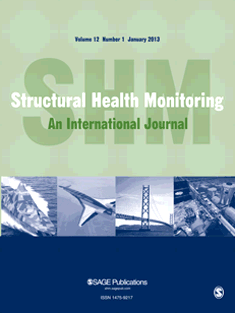
STRUCTURAL HEALTH MONITORING-AN INTERNATIONAL JOURNAL
Unveiling Insights in Biophysics and Mechanical EngineeringSTRUCTURAL HEALTH MONITORING-AN INTERNATIONAL JOURNAL, published by SAGE PUBLICATIONS LTD, stands at the forefront of interdisciplinary research in the fields of Biophysics and Mechanical Engineering, with an impressive 2023 ranking of Q1 in both categories. Since its inception in 2002, this journal has provided a critical platform for scholars and practitioners to disseminate innovative methodologies and findings concerning the assessment, monitoring, and management of structural integrity across various applications. With a robust Scopus ranking of #28 out of 672 in Mechanical Engineering and #8 out of 152 in Biophysics, the journal underscores its commitment to excellence and relevancy in advancing the science of structural health monitoring. Dedicated to fostering collaboration and knowledge sharing, the journal welcomes contributions that push the boundaries of conventional systems, enhancing safety, efficiency, and sustainability in engineering practices. Researchers, professionals, and students are encouraged to explore the wealth of knowledge this journal offers, as it continues to shape the future of structural health monitoring up to 2024 and beyond.
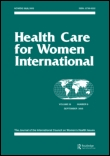
Health Care for Women International
Advancing Knowledge for Women's Health WorldwideHealth Care for Women International is a prestigious academic journal published by Taylor & Francis Inc., dedicated to advancing the knowledge and understanding of health care specifically for women. Established in 1984, the journal has built a reputable legacy, currently ranked in the Q1 category for Health Professions in 2023, reflecting its influence and commitment to quality research. It addresses a diverse range of topics, including reproductive health, gender-specific health issues, and policy implications, providing a comprehensive platform for researchers, clinicians, and policymakers alike. With its robust editorial board and rigorous peer-review process, the journal serves as an essential resource for the latest developments, innovative practices, and research findings that impact women's health globally. The journal is indexed in Scopus, ranking 9th out of 21 in General Health Professions, ensuring its content is highly visible and accessible to the international research community. While the journal is not open access, it remains committed to disseminating high-quality scientific work that informs better health outcomes for women everywhere.
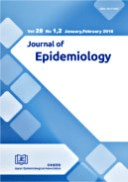
JOURNAL OF EPIDEMIOLOGY
Transforming data into impactful health strategies.JOURNAL OF EPIDEMIOLOGY is a premier peer-reviewed journal published by the JAPAN EPIDEMIOLOGICAL ASSOCIATION dedicated to advancing the field of epidemiology and public health. With an impressive impact factor and recognition as a Q1 journal in both the epidemiology and miscellaneous medicine categories, it ranks in the top percentile of its field, occupying the 28th position out of 148 journals in epidemiology according to Scopus. Since its inception in 1991, this open access journal has provided researchers, practitioners, and students with valuable insights and findings that shape healthcare policies and practices globally. The journal covers a broad range of topics within epidemiology, fostering a multidisciplinary approach to understanding and addressing health challenges. With a commitment to high-quality research and accessibility, the JOURNAL OF EPIDEMIOLOGY plays a crucial role in the dissemination of knowledge and best practices within the public health community.

CIN-COMPUTERS INFORMATICS NURSING
Empowering Healthcare with Cutting-Edge ResearchCIN-COMPUTERS INFORMATICS NURSING is a distinguished journal that publishes cutting-edge research at the intersection of nursing and information technology. Published by Lippincott Williams & Wilkins, the journal has been a pivotal platform since 2002, catering to the needs of health informatics professionals and nursing researchers. With an impressive impact factor and ranked within Q2 in Nursing (miscellaneous) and other relevant categories, it serves as a key resource for advancing knowledge and best practices in the field. The journal's inclusion in important databases ensures broad visibility and access to the latest findings that influence healthcare delivery. CIN-COMPUTERS INFORMATICS NURSING welcomes a diverse range of articles, including empirical studies, reviews, and innovative methodology approaches, making it an invaluable asset for clinicians, educators, and scholars dedicated to enhancing nursing informatics and improving patient outcomes.
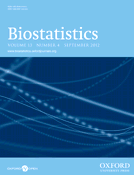
BIOSTATISTICS
Exploring the synergy of statistics and biomedicine.BIOSTATISTICS is a premier academic journal dedicated to the intersection of statistical methodologies and their applications in the field of biomedicine, published by Oxford University Press. With its ISSN 1465-4644 and E-ISSN 1468-4357, the journal has established itself as a crucial resource for researchers and professionals in the broad disciplines of statistics and probability, particularly within medical contexts. The journal proudly holds a Q1 ranking in multiple categories as of 2023, including Medicine (miscellaneous), Statistics and Probability, as well as Statistics, Probability, and Uncertainty, placing it at the forefront of statistical research. It has also achieved notable Scopus rankings, underscoring its influence and reach—ranking 27th in Mathematics (Statistics and Probability) and 94th in Medicine (General Medicine). Although it does not currently offer open access options, BIOSTATISTICS remains committed to advancing scholarly conversation and innovation in statistical science, making it an essential outlet for both established and emerging researchers. With contributions spanning from 2003 to 2024, this journal is actively seeking to foster an understanding of complex statistical approaches in biomedicine, enabling professionals in the field to apply robust statistical techniques to real-world problems.
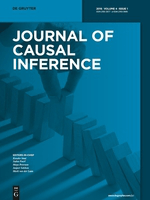
Journal of Causal Inference
Uncovering insights that shape contemporary challenges.The Journal of Causal Inference, published by DE GRUYTER POLAND SP Z O O, is an esteemed academic journal dedicated to advancing the field of causal analysis within statistics and probability. Since transitioning to an Open Access model in 2020, the journal has encouraged widespread dissemination of research findings and fostered collaborative inquiry among scholars globally. Situated in Germany, the journal serves as a vital resource for researchers and professionals looking to explore innovative methodologies and applications in causal inference. With an impressive Q2 ranking in both the Statistics and Probability and Statistics, Probability and Uncertainty categories for 2023, it provides a prestigious platform for impactful contributions that address contemporary challenges in these domains. The journal, which has a convergence period from 2018 to 2024, actively promotes rigorous peer-reviewed research that pushes the boundaries of understanding in this critical area of study, aiming to provide fruitful insights for academics, practitioners, and students alike.
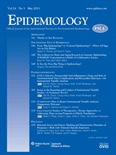
EPIDEMIOLOGY
Empowering research to enhance population health outcomes.EPIDEMIOLOGY, published by Lippincott Williams & Wilkins, stands as a vital resource in the field of epidemiological research. With its ISSN 1044-3983 and E-ISSN 1531-5487, this journal has been a cornerstone for scholars since its inception in 1990. Covering a wide array of topics within the domain, it strives to disseminate cutting-edge findings that inform public health policies and clinical practices. Currently ranked Q3 in Epidemiology and positioned at #33 out of 148 according to Scopus, the journal boasts an impressive 78th percentile rank, reflecting its significance and impact within the academic community. Though not open access, EPIDEMIOLOGY provides robust access options for institutional subscribers, ensuring that critical epidemiological insights reach a broad audience. As this field continues to evolve, the journal remains dedicated to empowering researchers, practitioners, and students with the knowledge necessary to advance public health initiatives and improve population health outcomes.

Survey Methodology
Unlocking the potential of surveys in diverse domains.Survey Methodology, published by STATISTICS CANADA, is a prominent academic journal dedicated to the exploration and advancement of survey methods across various domains. First established in 1987, this journal has become a significant resource for researchers, professionals, and students interested in methodological developments in data collection and statistical analysis. With a 2023 Q2 ranking in Modeling and Simulation and a Q3 ranking in Statistics and Probability, Survey Methodology provides a vital platform for disseminating innovative research and practical applications related to survey techniques, contributing to the field's robust discourse. Although it operates on a subscription basis, the journal's archives from its inception to present are invaluable for those seeking to deepen their understanding of contemporary survey practices. By bridging theory and application, Survey Methodology supports the continuous improvement of survey research, thus playing an essential role in shaping data-driven decision-making in both academic and applied settings.

JCO Clinical Cancer Informatics
Advancing cancer care through innovative informatics.Welcome to JCO Clinical Cancer Informatics, an esteemed journal at the forefront of the intersection between oncology and health informatics. Published by Lippincott Williams & Wilkins, this journal is dedicated to advancing the understanding and application of cancer data through innovative informatics solutions. Since its inception in 2017, JCO Clinical Cancer Informatics has established itself as a critical resource for researchers, practitioners, and students, as evidenced by its high rankings in the 2023 Scimago Quartiles—Q2 in Cancer Research and Q1 in both Health Informatics and Oncology. With a commitment to open access, this journal aims to disseminate groundbreaking research findings that enhance cancer care and inform public health strategies. Positioned in the United States, it serves as a pivotal platform for sharing knowledge and fostering collaboration within the global cancer research community.
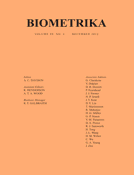
BIOMETRIKA
Pioneering Insights in Probability and Applied MathematicsBIOMETRIKA, published by the esteemed Oxford University Press, stands as a pivotal journal in the fields of statistics, probability, and applied mathematics since its inception in 1908. With ISSN number 0006-3444 and E-ISSN 1464-3510, this journal maintains an impressive reputation, consistently achieving Q1 rankings across multiple categories including Agricultural and Biological Sciences, Applied Mathematics, and Statistics. Addressed to a global audience from its base in Oxford, United Kingdom, BIOMETRIKA serves as an essential platform for disseminating rigorous research aimed at advancing statistical methodologies and their applications. While the journal does not offer Open Access options, it is recognized for its high-impact output, holding significant positions in Scopus rankings - specifically attaining a 94th percentile rank in General Mathematics and a 91st percentile in Statistics and Probability. Scholars, professionals, and students alike will find in BIOMETRIKA a wealth of knowledge that bridges theory and practice within the vast domain of statistical science, making it indispensable for ongoing research and education in the field.